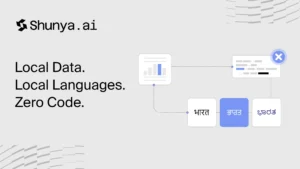| Blog Summary Indian teams need localised prompting techniques to get reliable, context-aware outputs. This guide covers syntax tips, structure templates, and best practices for LLMs in Hinglish and multilingual workflows. |
Prompting is half the magic. Especially in India, where our customers don’t speak in plain English. From Hinglish to Marathi-English hybrids, this blog breaks down how to write effective prompts for Indian LLM use cases.
Why Prompt Engineering Matters?
- Prompt = Programming
Every prompt is an instruction—better prompts yield better outcomes, especially in low-resource or code-mixed scenarios.
- Indian Complexity
Users often mix languages, change syntax mid-sentence, or use colloquial tones. Prompts must anticipate this behaviour.
Prompting Techniques That Work in India
- Instruction + Examples
Combine a clear task with a few demos. Example: ‘Translate this Hinglish message to English. Input: Arre bhai, mera order kahan hai? Output: Hey, where is my order?’
- Chain-of-Thought Prompts
Ask the model to explain reasoning. Helps reduce hallucination in regional logic or legal compliance prompts.
- Role-Play Prompts
Frame the model as a role: ‘You are a Flipkart customer agent fluent in Hindi and English…’ Works well for service workflows.
Testing and Optimisation
- Prompt A/B Testing
Compare multiple versions using user evals or live CX metrics like response quality and latency.
- Feedback Loop
Collect frequent queries, rework poor-performing prompts, and fine-tune templates.
Tools to Make It Easier
- Shunya.ai’s Prompt Hub
Library of tested, industry-specific prompt templates for Indian use cases—editable, reusable, multilingual.
Conclusion
Prompting is how you make AI work for your users—not just globally, but locally. With the right structure and feedback, even code-mixed prompts can feel native and intelligent.
Explore the Prompt Hub on Shunya.ai and get started with tested Indian-ready prompt flows today.



